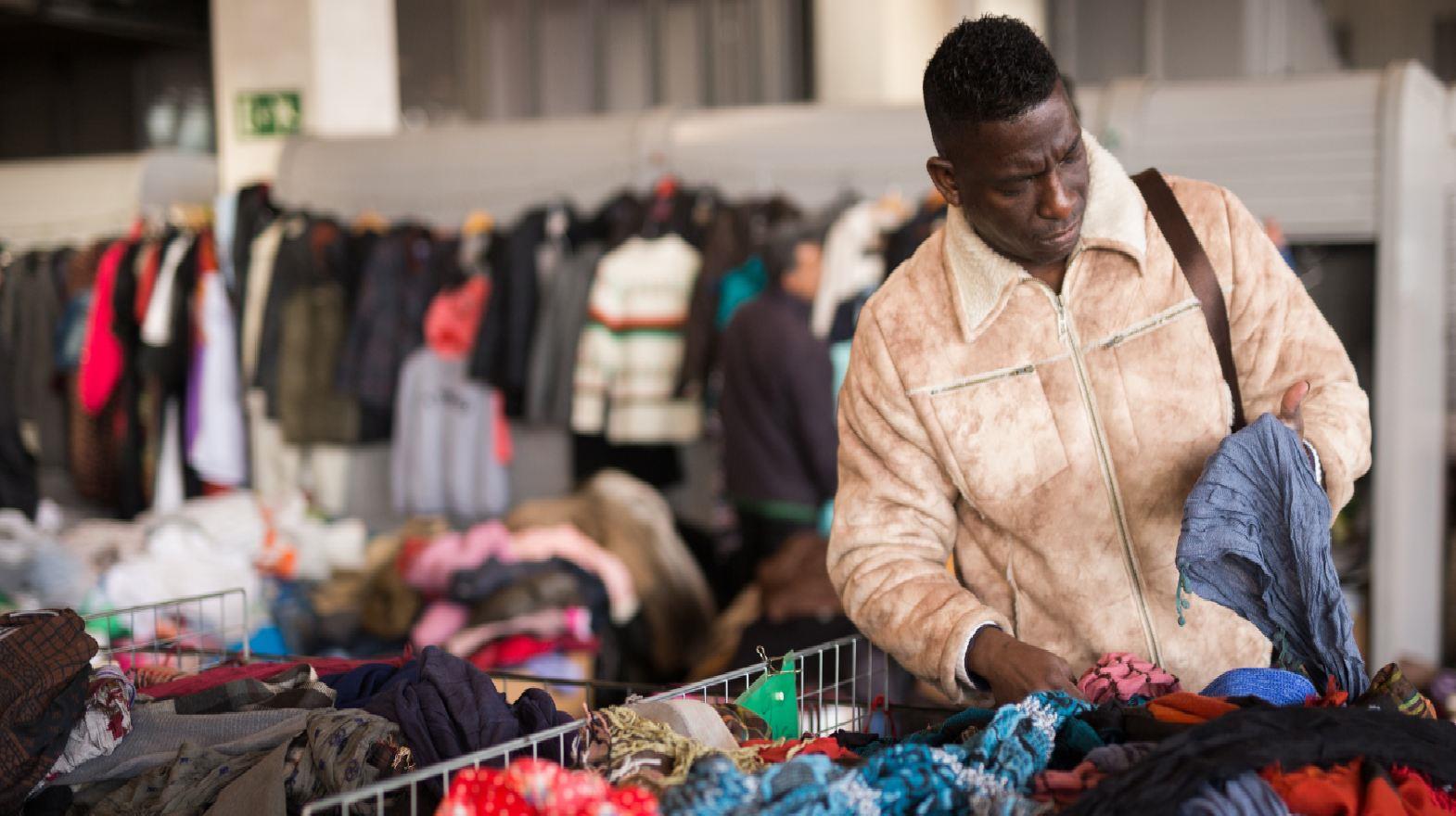The recent fire at Ghana’s Kantamanto Market, one of the largest second-hand clothing hubs globally, sent shockwaves through the fashion and sustainability communities. This devastating event destroyed over 100 shops, impacted the livelihoods of approximately 8,000 traders, and underscored vulnerabilities in the infrastructure and operations of second-hand clothing markets. Beyond the immediate crisis, the fire has also brought into focus the need for a more resilient, sustainable, and equitable framework for these vital ecosystems.
Second-hand markets like Kantamanto are crucial nodes in the global circular economy, extending the life cycle of garments and providing livelihoods for millions. To honour their importance and rebuild effectively, stakeholders must seize this moment as an opportunity for transformation. This article explores strategies for improving safety, strengthening infrastructure, and embedding circular economy practices into second-hand clothing markets.
Prioritising Safety in Market Spaces
The Kantamanto fire revealed the critical need for improved safety measures in second-hand markets. These densely populated spaces, often informal and under-regulated, are highly susceptible to accidents and disasters.
Key Safety Measures
• Fireproofing Infrastructure:
o Construct market spaces with fire-resistant materials and implement zoning regulations to reduce fire risks.
o Equip markets with fire extinguishers, smoke detectors, and sprinkler systems.
• Emergency Preparedness:
o Train traders and market workers in fire safety and emergency response protocols.
o Conduct regular drills to ensure preparedness for potential disasters.
• Improved Layout and Accessibility:
o Redesign markets to include wider pathways and clear emergency exits, facilitating quick evacuation during emergencies.
• Community-Led Safety Initiatives:
o Establish safety committees comprising traders and local leaders to oversee compliance with safety regulations and conduct regular inspections.
• Incorporating Modern Technologies:
o Use IoT (Internet of Things) devices to monitor fire hazards and alert authorities in real-time.
Rebuilding with Resilient Infrastructure
Rebuilding Kantamanto and similar markets presents an opportunity to modernise their infrastructure. Durable and well-organised market spaces can enhance safety and operational efficiency while fostering a better environment for traders and customers alike.
Proposed Infrastructure Enhancements
• Permanent Structures:
o Replace makeshift stalls with sturdy, weather-resistant structures that can withstand environmental and operational stressors.
• Integrated Waste Management Systems:
o Establish sorting and recycling stations within the market to manage unsellable garments and reduce environmental impact.
• Digital Market Platforms:
o Create digital platforms that allow traders to list inventory online, expanding their reach and reducing physical overcrowding.
• Renewable Energy Solutions:
o Install solar panels and other renewable energy sources to power market operations sustainably.
• Shared Resource Centres:
o Set up centralised hubs within markets to provide traders with shared access to tools, storage, and technology, fostering collaboration and efficiency.
• Green Spaces:
o Incorporate green spaces into market designs to improve air quality, provide shade, and create a healthier environment for traders and shoppers.
Embedding Circular Economy Practices
Second-hand clothing markets are already integral to the circular economy, but their potential remains underutilised. Embedding circular practices can amplify their impact on sustainability and economic resilience.
Strategies for Circularity
• Upcycling and Repair Programmes:
o Support initiatives that train traders and artisans in upcycling and repairing unsellable garments, adding value and reducing waste.
• Textile Recycling Facilities:
o Collaborate with local and international partners to establish textile recycling hubs, turning unsellable items into raw materials for new products.
• Take-Back Schemes:
o Encourage brands to collaborate with markets by implementing take-back programmes, collecting used garments for proper sorting and recycling.
• Consumer Education:
o Launch campaigns to educate consumers on the importance of donating high-quality items and supporting sustainable practices.
• Circular Business Incubators:
o Establish incubators within markets to support entrepreneurs in developing innovative circular solutions, such as rental services or repair-on-demand.
• Transparency Initiatives:
o Introduce labelling systems that provide consumers with information on the origin, material composition, and environmental impact of second-hand garments.
Leveraging Global Collaboration
The challenges faced by second-hand markets are not isolated; they are part of a broader global issue of textile waste management and sustainability. Collaboration among international brands, NGOs, and governments is critical to fostering resilient markets.
Collaborative Actions
• Funding for Recovery and Development:
o Brands and governments should establish recovery funds to rebuild markets and invest in long-term development.
• Knowledge Exchange Programmes:
o Facilitate partnerships between markets like Kantamanto and global organisations to share best practices in sustainability and market management.
• Adoption of Regulatory Frameworks:
o Develop and implement international standards for second-hand clothing trade, inspired by the Basel Convention, to ensure ethical and sustainable practices.
• Global Recycling Networks:
o Create international networks to connect recycling facilities, ensuring unsellable garments are processed efficiently and sustainably.
• Advocacy for Equitable Trade:
o Push for global agreements that prioritise fair trade practices and equitable resource distribution in the second-hand clothing industry.
• Cultural Exchange Initiatives:
o Highlight the cultural significance of markets like Kantamanto through global media campaigns, fostering appreciation and support for their role in the fashion ecosystem.
Empowering Traders and Communities
The heart of second-hand markets lies in the traders and communities that sustain them. Supporting their growth and resilience is vital to the long-term success of these ecosystems.
Empowerment Strategies
• Access to Microloans and Grants:
o Provide financial support for traders to rebuild their businesses and invest in sustainable practices.
• Skill Development Programmes:
o Offer training in areas such as digital literacy, marketing, and sustainable garment handling to enhance traders’ capabilities.
• Community-Led Decision Making:
o Engage traders and community leaders in planning and decision-making processes for market redevelopment.
• Mentorship Networks:
o Establish mentorship programmes connecting traders with industry experts to share knowledge and foster growth.
• Local Supply Chain Integration:
o Promote collaborations between traders and local textile producers to strengthen domestic production capabilities.
• Health and Well-being Support:
o Provide access to healthcare services and wellness programmes for traders, recognising their essential role in sustaining these markets.
Conclusion: From Crisis to Catalyst
The Kantamanto fire is a sobering reminder of the vulnerabilities within second-hand clothing markets, but it is also an opportunity to catalyse meaningful change. By prioritising safety, investing in resilient infrastructure, embedding circular practices, and fostering global collaboration, stakeholders can transform these markets into models of sustainability and equity.
Second-hand clothing markets are not just places of commerce; they are ecosystems that drive economic empowerment and environmental stewardship. Reimagining these spaces after the Kantamanto tragedy is not just a necessity—it is a chance to create a more sustainable and equitable future for fashion.

20250117163420.png)





Comments